Car maintenance can be tricky. But fortunately, you don’t need to be a trained mechanic to make your vehicle last longer. Modern cars, in particular, make it easier to minimize your repair bills and save money throughout your car’s lifespan.
If you’re looking to make your car last longer and avoid the need for frequent repairs, then you must have the proper knowledge at your disposal. While your owner’s manual may cover the nitty-gritty details for your specific make and model, there are plenty of methods available to car owners that can help extend the time before your next vehicle.
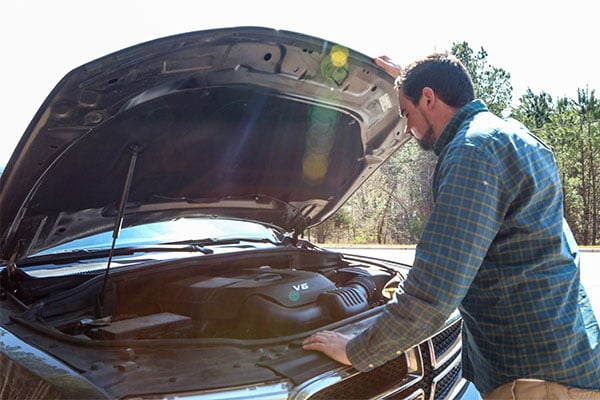
Can I Make My Old Car Last Longer?
If you’re not currently looking for a new car or can’t find a suitable model for your budget, there’s no choice but to extend the life of your current vehicle. You’re not alone either. IHS Markit estimates that the average car in the US is over 12 years old, which puts many drivers in the position to make their vehicle last.
100,000 miles was the popular sign that a vehicle had reached the end of its lifespan back in the day. But that’s not the case anymore. These days, you can make your car last to 200,000 miles and beyond by keeping up with maintenance needs for 10 to 15 years.
With more time on the road, it’s easy for those car care tasks to grow from simple oil changes and tire rotations to more complex items like battery or brake replacements. Every milestone on your car’s recommended maintenance schedule has the chance to make things complicated as a car owner.
The best way to make your old car last longer is to stay ahead of its service needs. To do that, let’s start by breaking down significant service areas into quick tidbits that are easier to understand and manage.
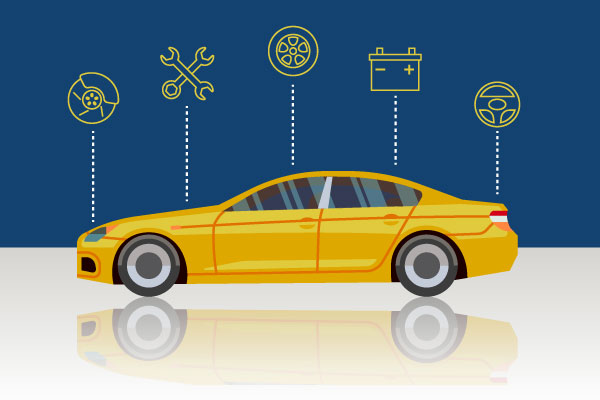
Quick and Easy Maintenance Tips to Remember
Unsurprisingly, there are a lot of maintenance items to prioritize as your car gets older. While it’s difficult to dive into every detail, there’s a handful of areas to keep in mind when thinking about car care.
Oil changes
The most essential routine service item you can offer your car is fresh engine oil. If you aren’t sure when to get an oil change, the best thing to do is go with your service manual. Generally, the recommended oil change intervals are 6 months or 7,500 miles, whichever you hit first.
The longer you go with dirty oil and an old oil filter can cause issues with your engine, such as loud noises, smoky exhaust, and difficulty accelerating or sticking to a consistent speed. Unsurprisingly, the best way to stay on top of old engine oil is through consistent oil change services.
Tires
Tire quality is another factor to consider when extending your car’s lifespan. Maintaining proper tire pressure is vital, especially if you live somewhere with fluctuating temperatures throughout the year. So long as your tire pressure gauge has your pressure set to 35 PSI, then your drive quality will remain consistent.
Tire rotations help extend the longevity of your tires. This service switches your car’s tires around to ensure an even wear to tire tread. It’s recommended that you have your tires rotated every 6 months or 6,000 to 8,000 miles.
If you’ve had the same set of tires for 6 years or more, then it’s essential to consider replacing them to avoid losing traction when braking. Drivers in colder climates can find themselves in hazardous situations if they don’t change their tires since the lack of tire tread can result in an accident.
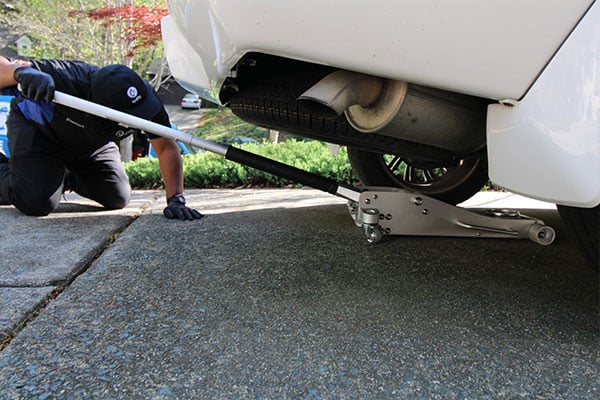
Battery
Keeping your car’s battery in good condition gets challenging as years and miles pass. A standard battery can last for 3 years, on average, but that largely depends on how you use your vehicle and where you live. Drivers in hotter climates can expect to change their battery sooner than a cold climate because the heat causes evaporation of battery fluid.
Fuel filters
As your car gets older, changing out the fuel filter becomes a necessity. Modern cars come with recommendations to replace this filter after 5 years or 30,000 to 50,000 miles. There are a few warning signs to know if you’ve had your vehicle for that amount of time, such as:
- Difficulty starting your car
- Acceleration issues, specifically when going uphill
- Weaker engine power and stalling problems
- Significantly lowered fuel efficiency
The worst-case scenario for your car would be a total fuel pump failure, which can even keep your car from starting entirely. Whether you need to replace the fuel filter for the first time or are approaching a second or third fuel filter replacement milestone, it’s crucial to keep this item in mind and get it replaced as soon as possible when the time comes.
Brakes
There’s enough to talk about with brakes alone that it could take up an entire article, but let’s go over the basics. The brake pads and rotors in your car are the middlemen between your braking system and the tires. Without them, you wouldn’t be able to stop your vehicle, so they’re a crucial part to understand.
The standard advice for maintaining your brakes is to judge how easy it is to come to a complete stop. If you notice that it’s taking too long to slow down, then it’s worth bringing your car to a mechanic and considering replacing the brake pads or rotors.
Brake fluid, on the other hand, is the key that keeps your braking system working smoothly. As a result, it needs to be checked and changed regularly. Unfortunately, the service intervals for brake fluid vary by your make and model, but the average gap is 3 years or 25,000 miles.
One sign that your brake fluid may need to be replaced is if there’s a noticeable change in your brake pedal’s feel. If moisture from the air gets into your brake system, then the pedal may feel oddly soft or spongy. At that point, prioritize a service appointment as soon as possible.
Cabin air filter
Cabin air filters have been a staple in cars since the early 2000s, and they’re critical in catching dirt, pollen, mold, and many more pollutants from circulating your cabin. Over time, these filters can become bogged down by captured contaminants, leading to weaker airflow from your cooling system.
The usual replacement interval for a cabin air filter is every 12 months or 12,000 miles. After that, you may begin to notice a decline in airflow as well as stale odors coming through your vents.
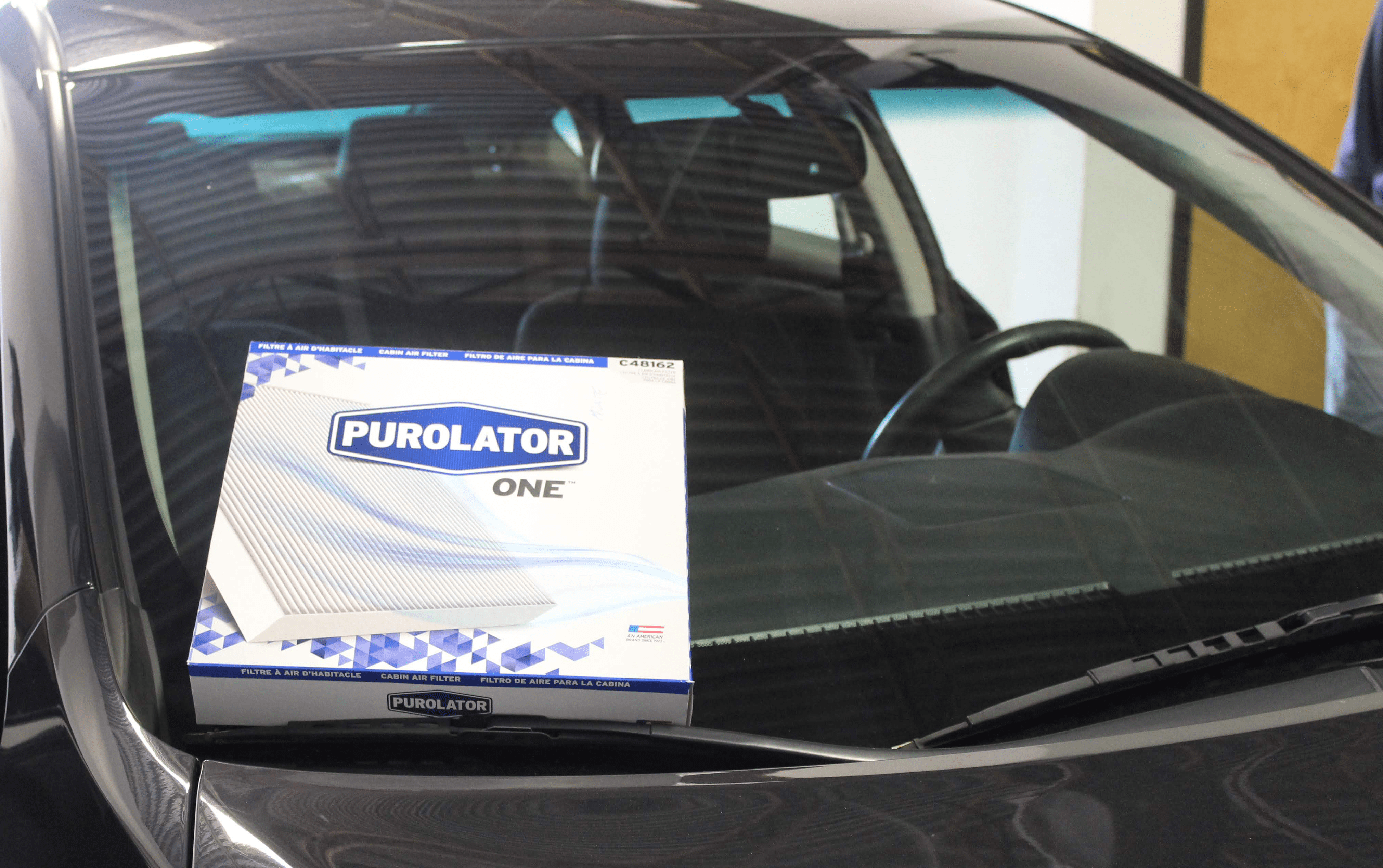
Spark plugs
The spark plugs in your car are small and often forgotten, but they have a vital responsibility: they spark the internal combustion inside your engine whenever you start the car! This important task makes them worth remembering, especially if you begin to have issues when getting your car running.
The most obvious sign that your spark plug needs to be replaced is if the check engine light comes on. Faulty spark plugs can cause your engine to misfire, and if they’re old enough, you may struggle to get your car started in the first place.
The general recommendation for spark plug replacement is every 80,000 miles or so, but that may vary depending on your make and model.
Whenever you’re in doubt about your car’s maintenance, always check your vehicle owner's manual, especially if you want to make your car last longer. We’ve also written about a variety of worthwhile tips for managing your car’s maintenance - from paint protection and interior stain removal to the benefits of windshield replacements!

What Type of Oil Does an Older Car Engine Need?
When scheduling your oil change services, it’s essential to know which type of oil is best for your car’s engine. Two options work best for your car: full synthetic and high-mileage oil.
Full synthetic oil has been the top choice for a while now, lasting over 10,000 miles in some cases. They’re manufactured from high-quality oil, natural gas, and other additives that preserve your engine and prevent sludge.
High-mileage oil is designed specifically with older cars with more than 75,000 miles. It contains similar additives as full synthetic but can help minimize wear and tear to your engine that can become more common as you approach that 100,000-mile milestone.
Both choices can help your car, but the decision between the two depends on how well you’ve maintained the vehicle. If you’ve only used full synthetic, you will likely be fine if you continue using it. But if you’ve used conventional oil throughout the car’s life, then it’s worth considering a change to full synthetic or high-mileage after 75,000 miles.
How to Improve Fuel Economy with an Older Car
When you own an older vehicle, gas mileage is an inevitable aspect to keep in mind. Older cars can struggle with fuel consumption, especially if routine maintenance like tire rotations and replacements have been neglected.
Fortunately, this is an area where premium fuel can come in handy. High-quality fuel contains additives similar to a full synthetic oil that can extend the life of your vehicle. While it can be more expensive, higher octane fuels are known to slow the buildup of carbon in your engine, thus improving your fuel economy.
![]()
Keeping Your Car's Cooling System Running Smoothly
We’ve already talked about your cabin air filter, but what are some other issues that can affect your cooling system? Not replacing your engine coolant can lead to some frustrating problems, such as weakened air intake or inefficient air conditioning. In hot temperatures, these can be detrimental to your engine and even your health.
Mechanics and some manufacturers recommend changing the coolant in your car after 30,000 miles, but your owner’s manual may have it as a maintenance item during your 60,000-mile checkup. As always, check your specific manual to confirm the interval for your make and model. It never hurts to be well informed when trying to keep your car running as long as possible.
Is Transmission Fluid the Same as Power Steering Fluid?
With so many moving parts and fluids in your car, these last two may fly under the radar. However, they both have crucial needs that can keep your vehicle running smoothly for longer. The most important thing to remember is that they are not the same thing, but they serve similar functions for their respective systems.
Transmission fluid is responsible for lubricating the bearings and metal pieces of your car’s transmission. Without fresh transmission fluid, your vehicle will struggle to shift gears and may make a loud, grinding noise when you attempt to do so. While this issue affects manual transmissions more than automatic, it’s essential to routinely change the fluid for both types.
Cars with manual transmissions should change their transmission fluid every 30,000 to 60,000 miles, while automatic transmissions can expect to change every 60,000 to 100,000 miles.
Power steering fluid, on the other hand, is crucial for maintaining your power steering system. Without fresh fluid, you wouldn’t be able to turn your steering wheel with the ease you’ve come to expect. If you’ve ever driven a farm tractor or ride-able lawnmower, then you have an idea of how frustrating a lack of power steering can be.
Fortunately, you don’t have to change your power steering fluid too often. Manufacturers and mechanics recommend that you replace the fluid every 75,000 to 100,000 miles. Of course, if you notice any difficulties or loud noises when attempting to turn, that’s a surefire sign to get your steering fluid replaced as soon as you can.
Keep Your Car Looking Great with a Quality Car Wash
We’ve covered a lot of maintenance knowledge for inside your vehicle, but what about the exterior? Keeping your car clean with regular wash or detail services is just as crucial for your paint as an oil change is for the engine.
The best car wash you can get is done by hand with a random orbital buffer and microfiber towels for waxing and drying. Both these tools prevent the kind of damage to your car’s paint that’s common at an automatic car wash. Another benefit of a quality wash by hand is the shine you get from the top down to your car’s wheel afterward. It’s second to none and can keep your paint looking brand new for years if regularly kept up.
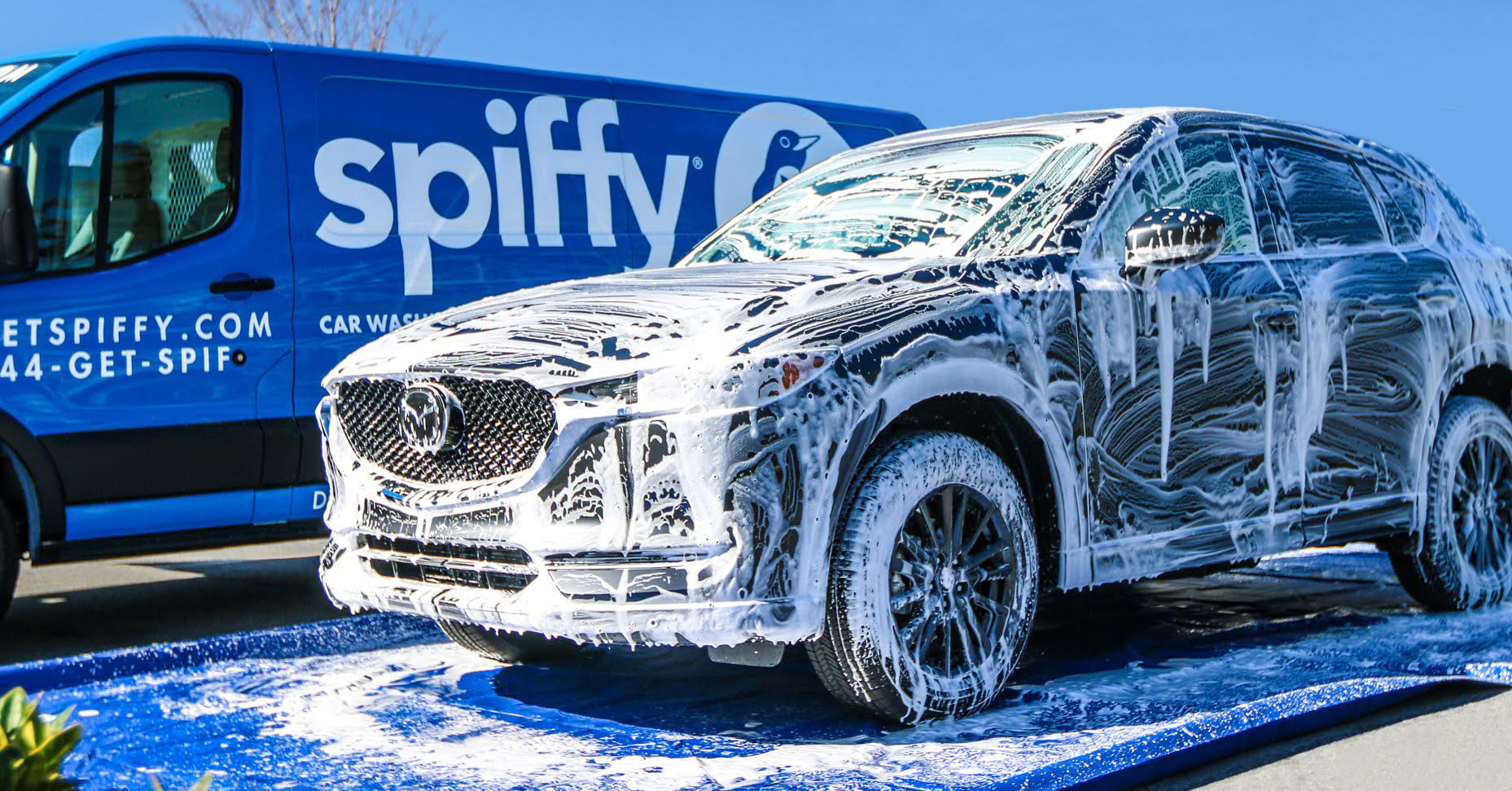
Schedule Quality Car Care Services with Spiffy
If you’re looking for a convenient, trusted, and professional maintenance option to make your car last for years to come, then you’re at the right place. Our Spiffy Technicians are dedicated to making your car feel new again from the inside out. Don’t delay on necessary maintenance needs ever again when you can have every service come directly to you, whether you’re at home or work!
Get $20 off your first service with us, just for giving Spiffy a try. We look forward to serving you soon!





